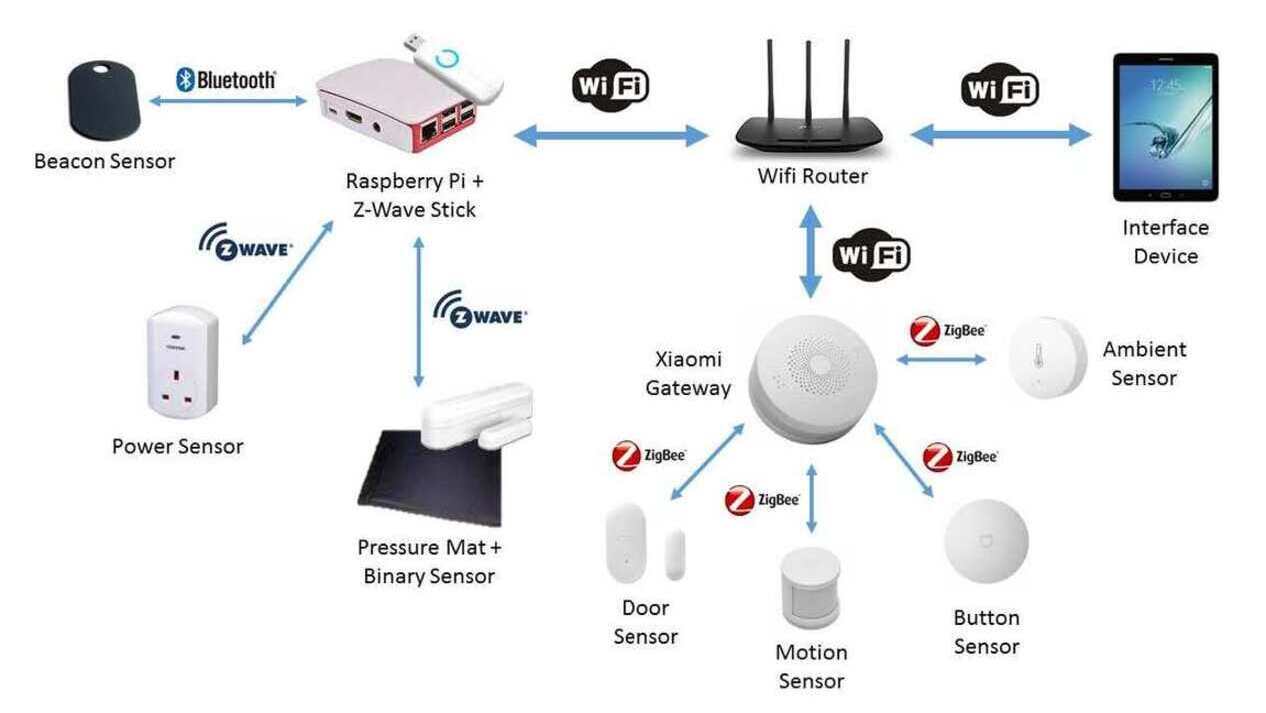The SCAMPI sensor toolkit supports monitoring meaningful activities. It is comprised of off-the-shelf and affordable sensors: motion, door, ambient (temperature and humidity), button, power, pressure and beacon sensors to monitoring of user activities in and around the home.
- Motion sensors – used to detect a resident’s presence within a room using with PIR (Passive Infrared) LED light beams which are then triggered when an object moves across the beams.
- Door sensors – used to detect whether the door attached to them is either opened or closed.
- Ambient sensor – comprised of two different sensors: a temperature sensor and a humidity sensor.
- Button sensors – a large wireless button that can be placed on any flat surface. It can detect clicks (single press, long press, or double click) and is useful for self-reporting.
- Power sensors – sockets that can be plugged into any regular outlet with built-in electrical consumption detectors for home electrical monitoring.
- Standalone wireless pressure sensors – applying pressure to trigger the sensor, used to detect pressure applied on floors beside a bed, sofa, or a chair.
- Beacon sensors – small sensors that sense environmental conditions, like temperature or movement, and can be placed on an object to detect which object the person is currently interacting with in the home.
The image shows the components of the sensing toolkit. At the centre of the system is a Raspberry Pi software programs used to collect data from the various sensors in the network and store them in a database.

